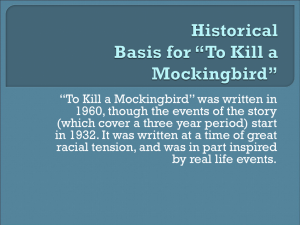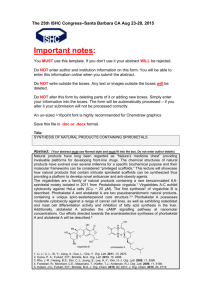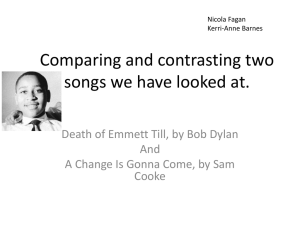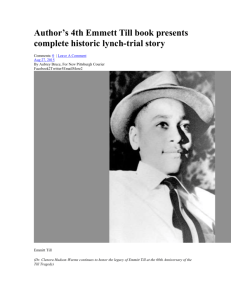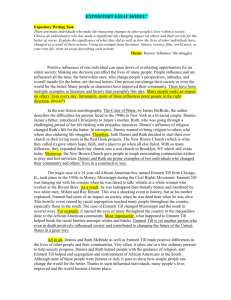File
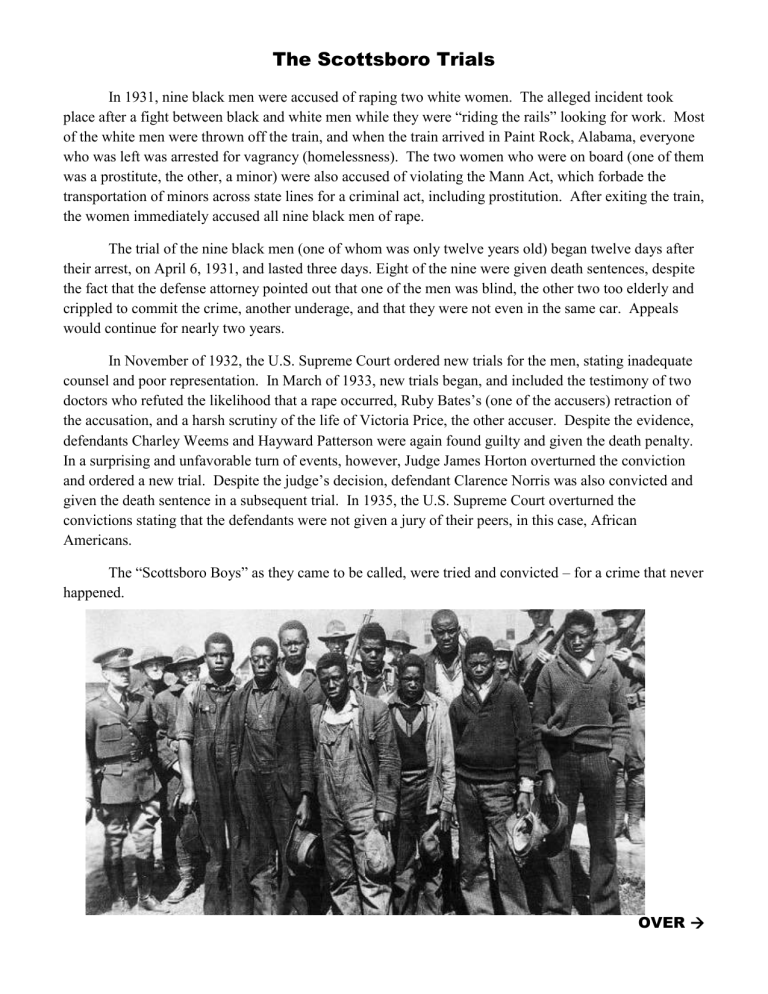
The Scottsboro Trials
In 1931, nine black men were accused of raping two white women. The alleged incident took place after a fight between black and white men while they were “riding the rails” looking for work. Most of the white men were thrown off the train, and when the train arrived in Paint Rock, Alabama, everyone who was left was arrested for vagrancy (homelessness). The two women who were on board (one of them was a prostitute, the other, a minor) were also accused of violating the Mann Act, which forbade the transportation of minors across state lines for a criminal act, including prostitution. After exiting the train, the women immediately accused all nine black men of rape.
The trial of the nine black men (one of whom was only twelve years old) began twelve days after their arrest, on April 6, 1931, and lasted three days. Eight of the nine were given death sentences, despite the fact that the defense attorney pointed out that one of the men was blind, the other two too elderly and crippled to commit the crime, another underage, and that they were not even in the same car. Appeals would continue for nearly two years.
In November of 1932, the U.S. Supreme Court ordered new trials for the men, stating inadequate counsel and poor representation. In March of 1933, new trials began, and included the testimony of two doctors who refuted the likelihood that a rape occurred, Ruby Bates’s (one of the accusers) retraction of the accusation, and a harsh scrutiny of the life of Victoria Price, the other accuser. Despite the evidence, defendants Charley Weems and Hayward Patterson were again found guilty and given the death penalty.
In a surprising and unfavorable turn of events, however, Judge James Horton overturned the conviction and ordered a new trial. Despite the judge’s decision, defendant Clarence Norris was also convicted and given the death sentence in a subsequent trial. In 1935, the U.S. Supreme Court overturned the convictions stating that the defendants were not given a jury of their peers, in this case, African
Americans.
The “Scottsboro Boys” as they came to be called, were tried and convicted – for a crime that never happened.
OVER
The Trial of Walter Lett
In 1933, Naomi Lowery, of Monroeville, Alabama, accused Walter Lett of rape. With the threat of lynching, since Lett was African American and Lowery, white, Lett remained in protective custody.
After an extremely brief trial in which Lett plead “not guilty,” he was scheduled for execution May
11,1934. Later, his sentence of death was repealed and he was given life in prison. He died in prison in
1937 of tuberculosis.
The Murder of Emmett Till
In 1955, Emmett Till, a fourteen-year-old boy from Chicago, Illinois, whistled at a white woman in a grocery store in Mississippi. Unaware that he had broken a time-honored Jim Crow Law, Till was later dragged out of his bed, beaten, and shot to death. His killers were acquitted by an all-white Southern jury. A few months later, the killers gave details descriptions of how and why they killed Emmett Till.
